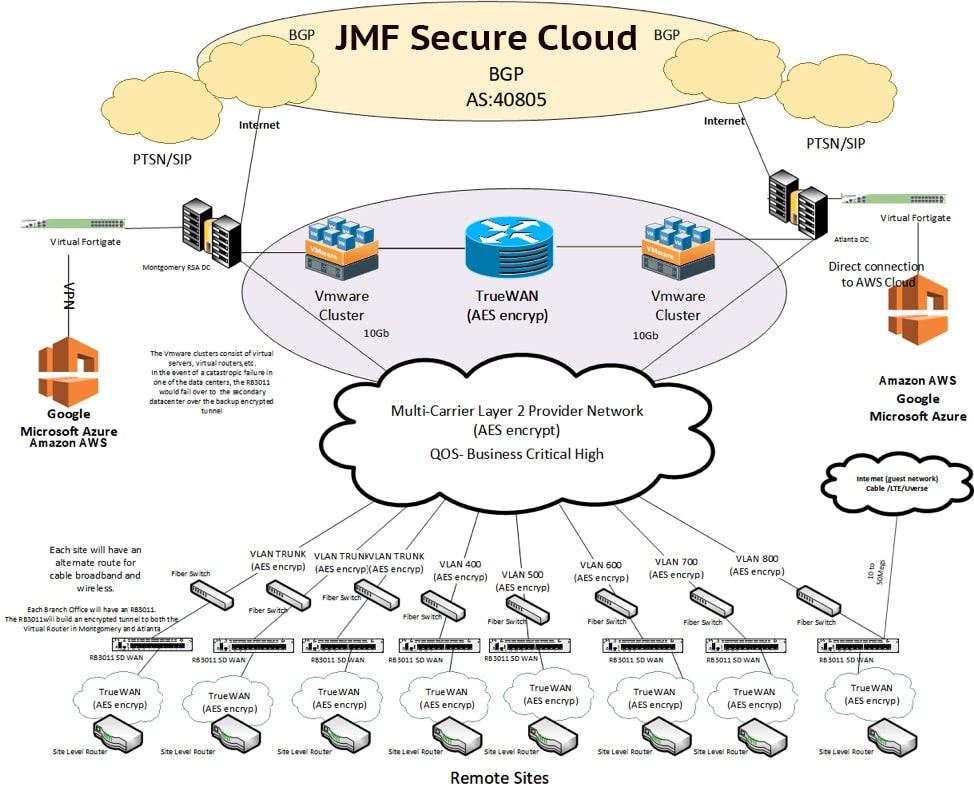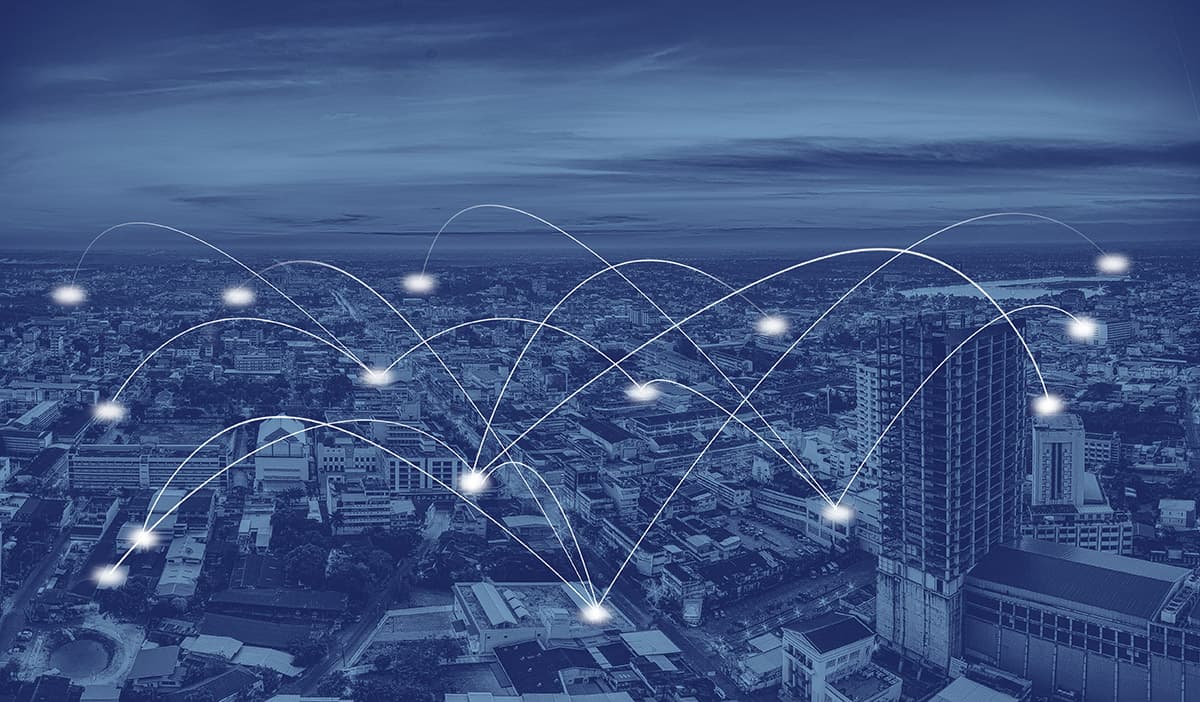Why Your Business Needs BGP, and What It Does for Your Organization
Most people have never even heard of BGP. It stands for Border Gateway Protocol. It is how the global internet works. So it is a very important protocol as without BGP the internet would not work. We have done a lot of consulting, design, and have been involved with a number of BGP deployments.
So have you ever wondered how the Internet really works, and where all the IP addresses come from? The answer: They come from all over the place. The originate from individual ASNs. In North America a group called ARIN over sees issuing IP addresses. The American Registry for Internet Numbers (ARIN) is a nonprofit, member-based organization that supports the operation and growth of the Internet. These IP addresses are issued in large blocks (subnets) and are advertised to the world via BGP using an Autonomous System Number or ASN. JMF’s ASN is 40805. Google’s is 15169. Do a quick google search for “AS40805” or “AS15166.”
This is what BGP does. It allows any entity to be its own Autonomous System on the global internet. BGP uses your Autonomous System Number to announce your IPs to the internet. As of writing this there are about 344,184 Autonomous Systems making up the entire internet. This can and should be considerably bigger, especially considering how many organizations and entities there are in the world. You can be a part of growing and scaling the Internet with significant advantages to your organization. How? Read on…
So the cool thing about BGP is that you can (and should) announce your IPs to multiple providers and other entities. Looking at one of the JMF BGP routers it says we have over 3.8 million paths to all those ASNs. That is because we have quite a few BGP peers (over 500). There are serious advantages to taking ownership of your IPs, instead of a single provider giving you some of theirs, which they control.

One advantage is having multiple paths. These paths are always calculated automatically to provide you the shortest path to any other ASN. Automatic redundancy is another huge advantage. All BGP routers on the internet are constantly updating each other, and your BGP router is constantly calculating the best path. The best path is always learned, so if a path is no longer there it will not be used. Last, but not least, is the fact that you can always use the same IPs on your network, servers, firewalls, and equipment. Many IT providers work a lot of magic to build “failover” solutions, that do not always work as expected for many reasons. In many cases we see BGP is the correct answer and the best solution. It is considerably less complex, it is standardized, and it simply works regardless of what you are doing on or in your network.
With the introduction of IPv6 it is very easy to get IPs for any entity that qualifies. The number of IPv6 addresses is expressed in numbers that we cannot even comprehend. One small local subnet for your internal lan contains 18 quadrillion IPs. The total number of IPv6 address is 2 to the 128th power or 340,282,366,920,938,463,463,374,607,431,768,211,456 IPs. Crazy right! IPv6 is built that way so every entity on the planet and beyond can be a part of the internet and can scale massively. For many reasons it is very important that the Global Internet move to IPv6 as much as possible, so ARIN makes this a fairly easy process.
The qualifications are simple and straightforward. You must be multi-homed, which means have more than 1 provider you can BGP peer with. That’s it. So if your business, entity, agency, Government, etc has the need for true autonomy and unparalleled uptime, if your organization needs more than 1 fiber provider, you can take control of your part of the Internet. And the cool part is that any provider who delivers your service over fiber can and will BGP peer with your organization.
JMF supports BGP peering across our entire network. We have walked a large number of organizations through the steps to get an account setup with ARIN, to get a ASN assigned, and to have IPs allocated to them. Once that is done, which usually only takes a few days, we can then provide consulting or fully managed services to assist your organization in correctly implementing BGP peering using your ASN and your IPs. While there are plenty of ways to tweak BGP peering for best performance, once it is setup and functioning there is not much else that needs to be done. It is designed to work that way. It is the backbone of the internet, so it always has to work.
BGP does not solve all problems, but it is absolutely a piece of the real enterprise solution. It is not expensive to setup or deploy, and it very well could take your business and operations to the next level of performance and reliability.

